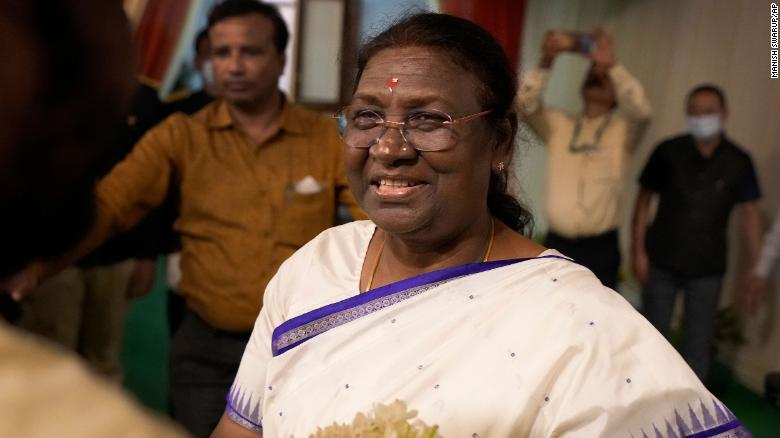The election of Droupadi Murmu ji as the President of India is historic for Indian democracy. Her remarkable journey from Odisha’s extremely poor tribal background, that too from the most backward Santhali community, to the highest constitutional position is marked by her struggles, grit and determination. Her elevation as ‘First Citizen’ is the matter of great joy and contentment from the entire country, more so for the tribal community. The nation had to wait for 70 long years to see a tribal woman reaching the highest office of the land. It marks yet another victory for our democracy and our Constitution.
India’s tribal population comprises 9% of our demography. Their struggles and sacrifices in our freedom struggle are invaluable and unforgettable. But the sad truth is that post-Independence no government took concrete steps for the development and upliftment of our tribal communities. No efforts were made to bring them to the national mainstream by ensuring their social and economic growth, while they also remained devoid of proper political representation.
It was under the leadership of Prime Minister Atal Bihari Vajpayee that the first serious steps were taken to fulfil the aspirations of our tribal society. In 1999 Atal ji created a separate Ministry of Tribal Affairs for empowerment and development of our tribal society which was followed by the formation of the National Commission for Scheduled Tribes through 89th Constitutional Amendment in 2003. The transformation of our tribal communities started by Atal Bihari Vajpayee has been taken forward by PM Shri Narendra Modi.
Guided by its oath of ‘Sabka Saath, Sabka Vikas, Sabka Vishwas and Sabka Prayas’, the Narendra Modi government has taken umpteen initiatives to fulfil the aspirations and hopes of the tribal population. In the past eight years, there has been a massive increase in budget allocation for projects linked to welfare and progress of tribal communities. The budget for Tribal Sub-Plan has been increased four-fold in 2021-22, from Rs 21,000 crores to Rs 86,000 crores.
Today piped water is now being supplied to 1.28 crore tribal homes under the Jal Jeevan Mission, 38 lakh houses under the Pradhanmantri Awas Yojna and 1.45 crore toilets have been constructed while 82 lakh Ayushman Bharat health cards have been distributed to tribal people. Similarly, the budget of Eklavya Model Schools specially developed for tribal students has been increased from Rs 278 crores to Rs 1,418 crores, while fund allocation for scholarships for tribal students has also been hiked from Rs 978 crores to Rs 2,546 crores. As part of entrepreneurship development initiative, 3,110 Van Dhan Vikas Kendras and 53,000 Van Dhan self-help groups have been established with an expenditure of Rs 327 crores.
Our tribal areas are most-affected by mining activities, but the financial gains from these mining activities were never shared with our tribal population. To address this lacuna, the Narendra Modi government created a District Mineral Fund so that 30% earnings from the mining activities could be spent in the development of tribal areas. So far Rs 57,000 crore has been accumulated and being used in various development works. Similarly, the number of Tribes India outlets, run by TRIFED which takes care of the marketing and sale of products made by our tribal communities, has been increased from 29 to 116.
PM Shri Narendra Modi has also brought rich tribal culture and heritage to the national limelight. Tribal arts, literature, traditional knowledge and skills have been included in various curricula. As part of ‘Azadi Ka Amrit Mahotsav’, a nationwide series of programmes are being organised to highlight the contributions of our great tribal leaders in our freedom struggle.
The nation now celebrates the birth anniversary of Bhagwan Birsa Munda, which falls on November 15, as Janjatiya Gaurav Diwas. The Narendra Modi government is developing Tribal Freedom Fighter Museums across the country with an expenditure of Rs 200 crores. In his speeches PM Shri Narendra Modi remembers our great tribal leaders and highlights their contributions to inspire today’s generation. All this underlines how the Narendra Modi government is tirelessly working for the honour and empowerment of our tribal society.
From Kashmir to the Northeast, a large chunk of our tribal population dominates our rural landscape in Jharkhand, Madhya Pradesh, Chhattisgarh, Odisha, Rajasthan and Gujarat. Post-Independence the Congress party exploited them as its vote-bank and ignored the tribal-dominated Northeast. It was PM Shri Narendra Modi who immediately after taking over as the Prime Minister began the transformation of our tribal areas at the right earnest. To kickstart the growth and development of the tribal-dominated Northeast, he formulated the Act East Policy. In the past eight years our North-eastern states have been successfully integrated into the national mainstream to become partners in growth and progress.
For decades poverty and social insecurity has been the biggest challenge for our tribal communities. This fear and uncertainty was tapped by the Left extremism in some states which led to tribal youth getting radicalised. This resulted in total disruption of growth and development in some of our tribal areas. The Narendra Modi government’s ‘zero tolerance’ policy towards terrorism has led to near complete elimination of Naxalism. Today violence and unrest in our tribal areas has been replaced by development and peace.
The socio-economic development and empowerment of our tribal society, their political representation has always been an integral part of the BJP’s philosophy. And, today under the leadership of PM Shri Narendra Modi India has chosen Droupadi Murmu as its first tribal woman President. It is also the shining example of PM Shri Narendra Modi’s resolute commitment towards empowerment of our tribal society.
The writer is Union Home Minister.

